| Zoothamnium arbuscula, a sessilid ciliate characterized by the tree-like structure of the colony and macrozooids; one of them has detached from the colony (right upper corner). (1) |
| |
| |
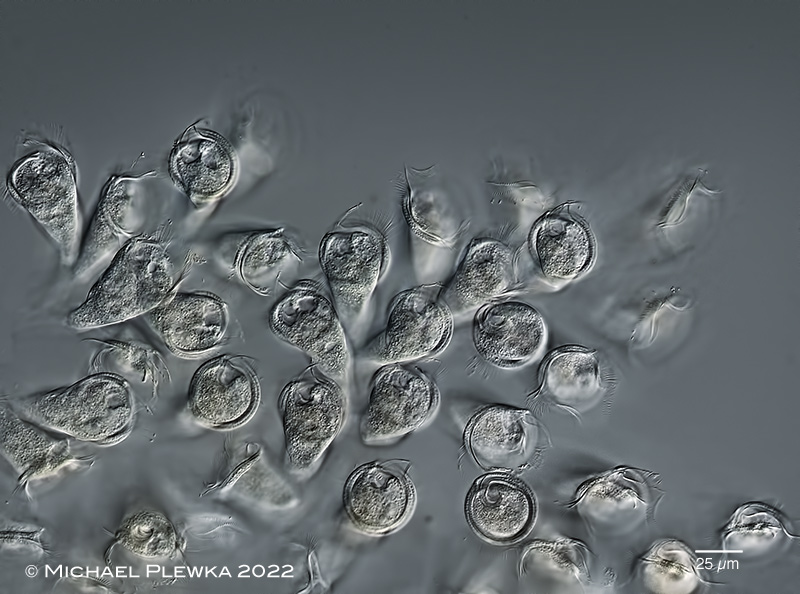 |
| Zoothamnium arbuscula, zooids. (1) |
| |
| |
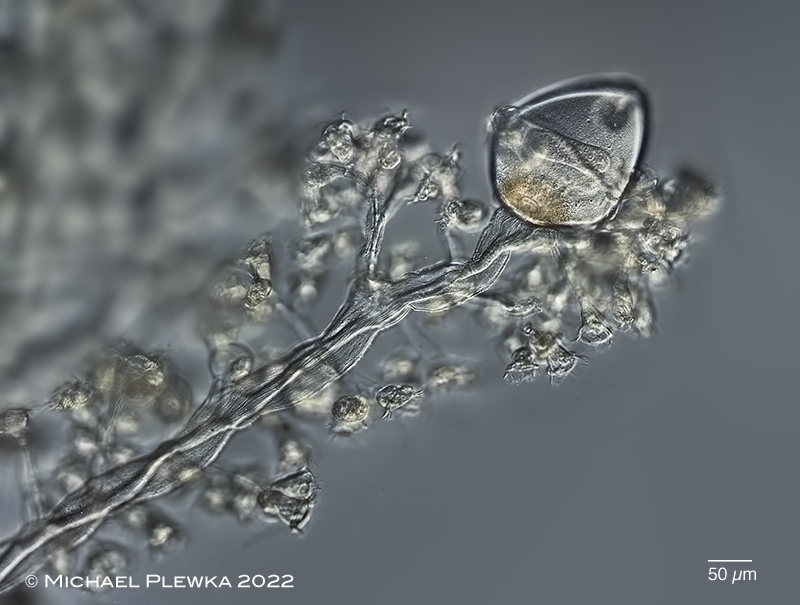 |
| Zoothamnium arbuscula, part of a colony, focus plane onone of the macrozooids, shortly before detaching from the colony. (1) |
| |
| |
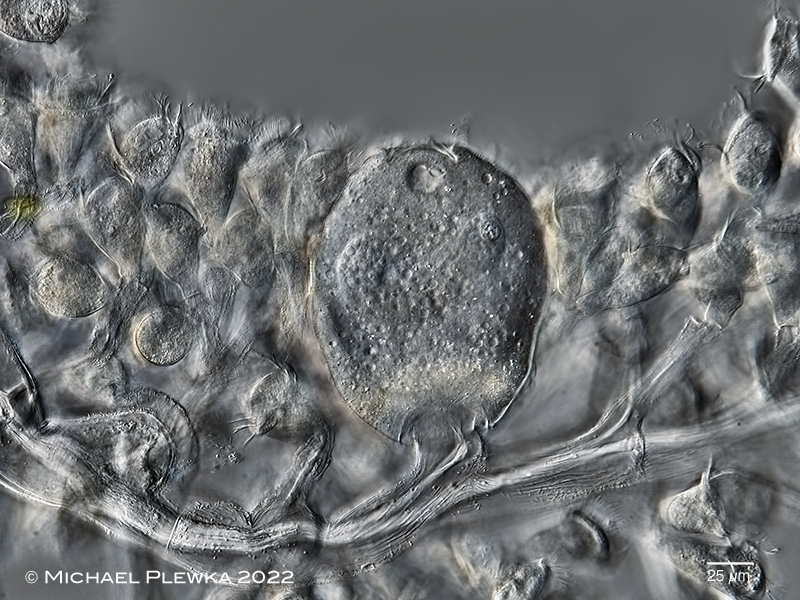 |
| Zoothamnium arbuscula, part of a colony, focus plane on the stem. In the center is a macrozooid, still attached to the stem. (1) |
| |
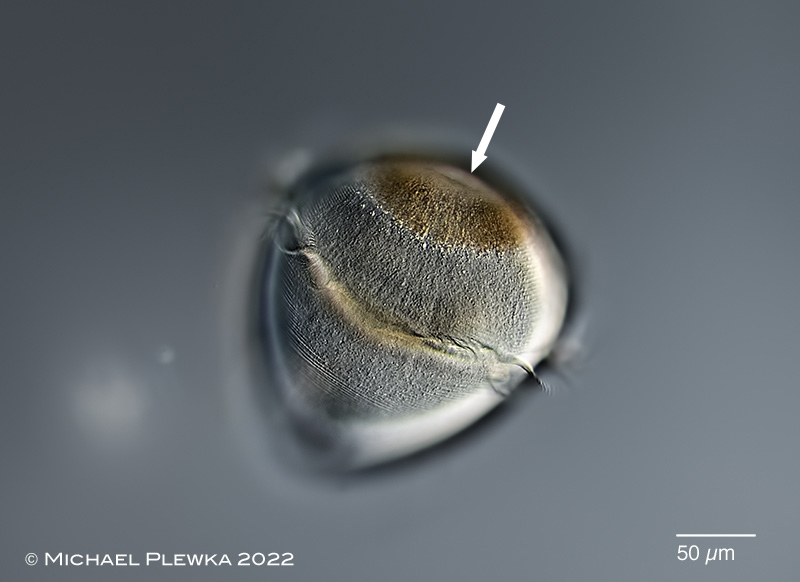 |
| Zoothamnium arbuscula, swimming macrozooid. The arrow points to the scopula, the region where the next stem will protrude. (1) |
| |
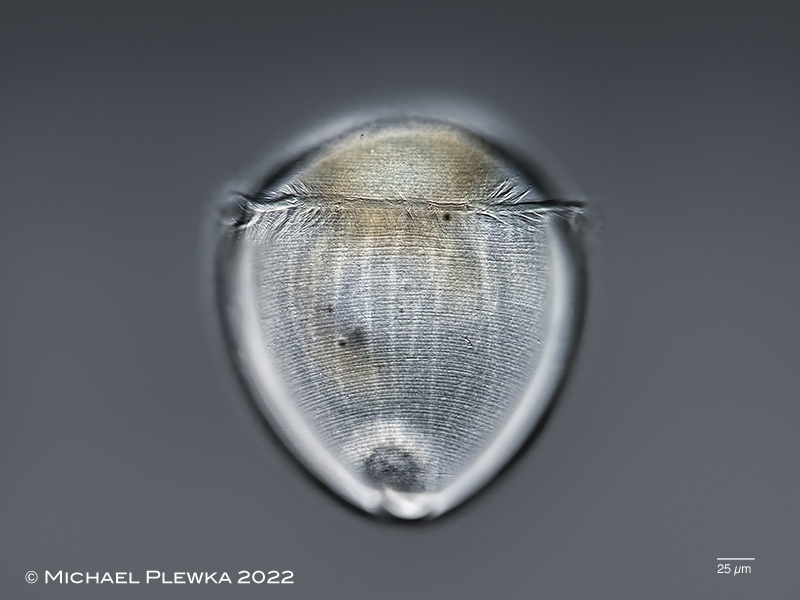 |
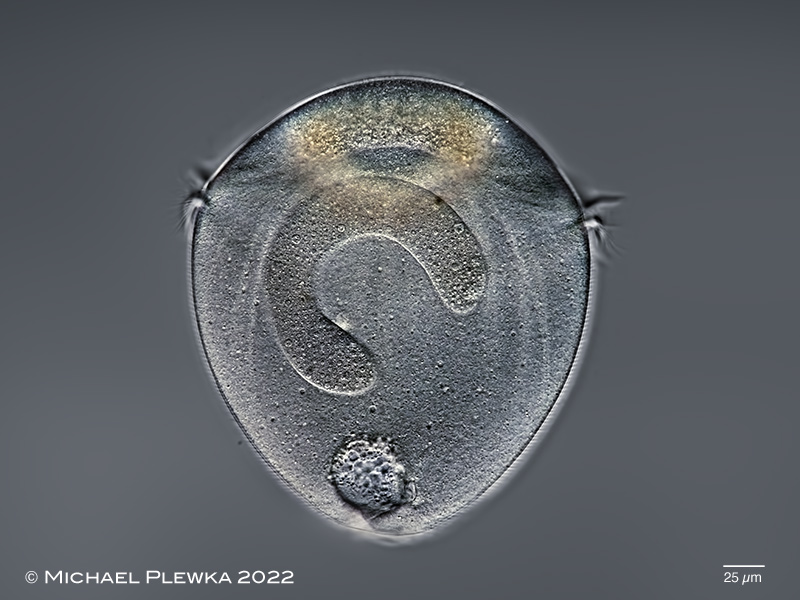 |
| Zoothamnium arbuscula, two images of the same macrozooid. Upper image: focal plane on the striated pellicula and the anterior trochus; lower image: focal plane on the horseshoe-like macronucleus and contractile vacuole. (1) |
| |
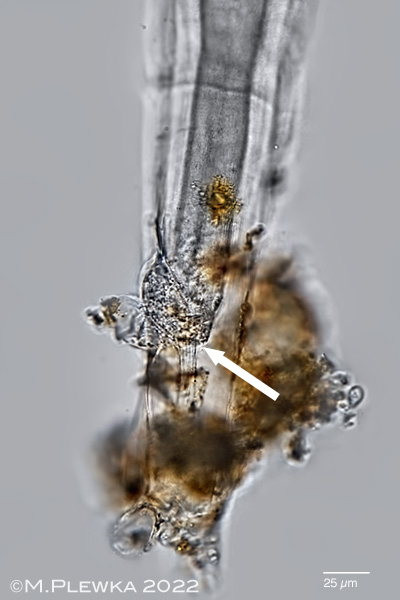 |
| Zoothamnium arbuscula, base of the main stem; the arrow points to a joint between the basal part without axoneme and the upper part with axoneme. (1) |
| |
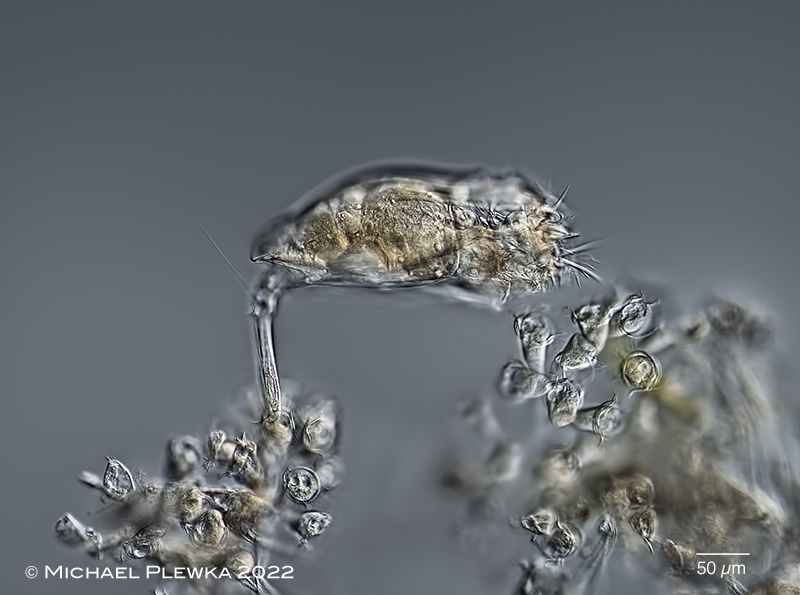 |
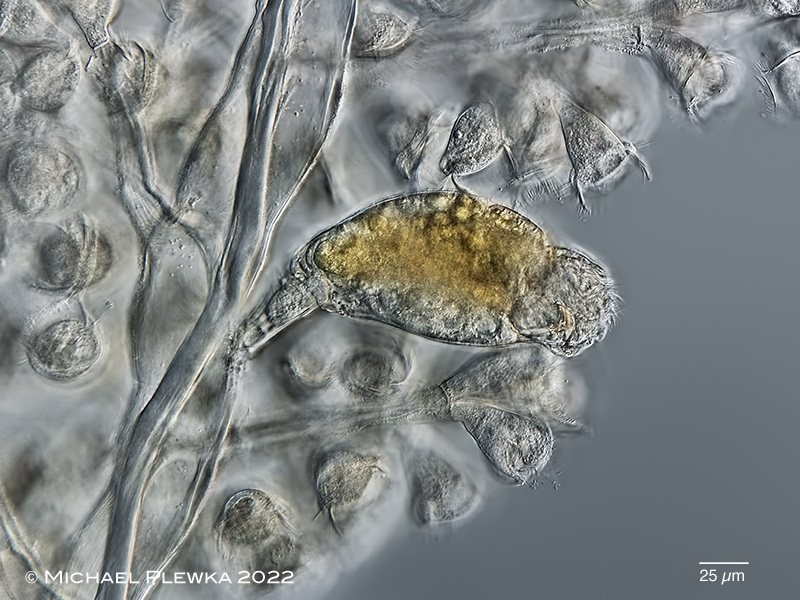 |
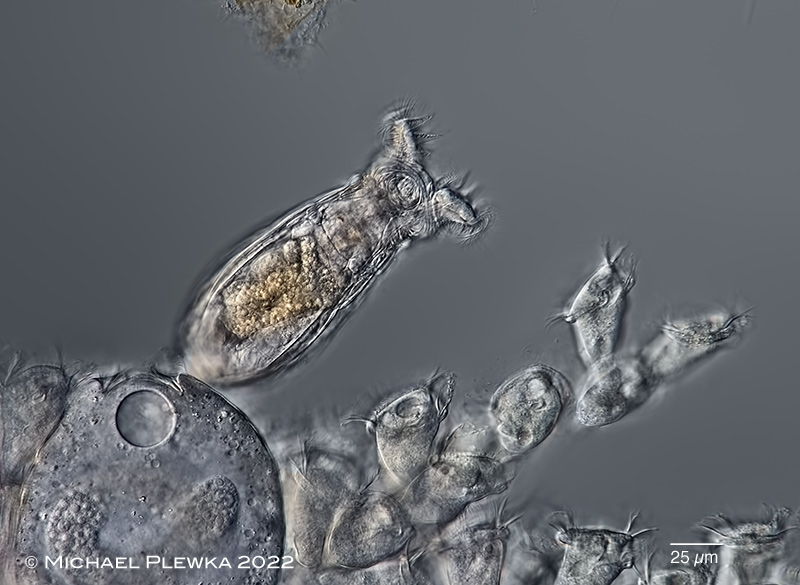 |
| Zoothamnium arbuscula, is the host or diet of other organisms like rotifers. The rotifer Euchlanis cf deflexa (upper image, lateral view) seems to be a predator of Zoothamnium. Also Pleurotrocha petromyzon (middle image, lateral view) could be observed feeding on the zooids. The bdelloid rotifer Philodina cf acuticornis (lower image, dorsoventral view), however, is commensal.(1) |
| |
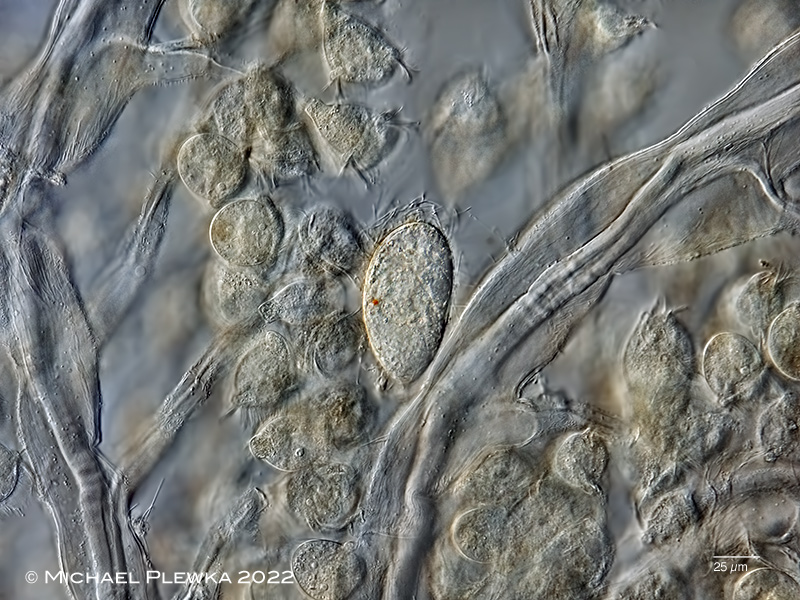 |
| Zoothamnium arbuscula; also some (undentified) rotifer eggs were found in the colonies. (1) |
| |
 |
| The bdelloid Philodina cf acuticornis attached to the cell of one of the zooids. (2) |
| |
 |
| Zoothamnium arbuscula; also some zooflagellata (?? Codosiga sp. ?? were observed as epibionts on this colony.(1) |
| |
| |
| |
| |
|
Location (1); (2): Henrichsteich, Hattingen, NRW, Germany, pond |
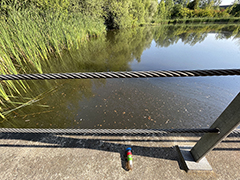 |
| |
| Habitat (1); (2): plankton-sample with algae and detritus (click image to enlarge >>>) |
| |
| Date (1): 29.09.2022; 30.10.2022 (2) |
| |
|
|
|
|
|
|
| |
| |